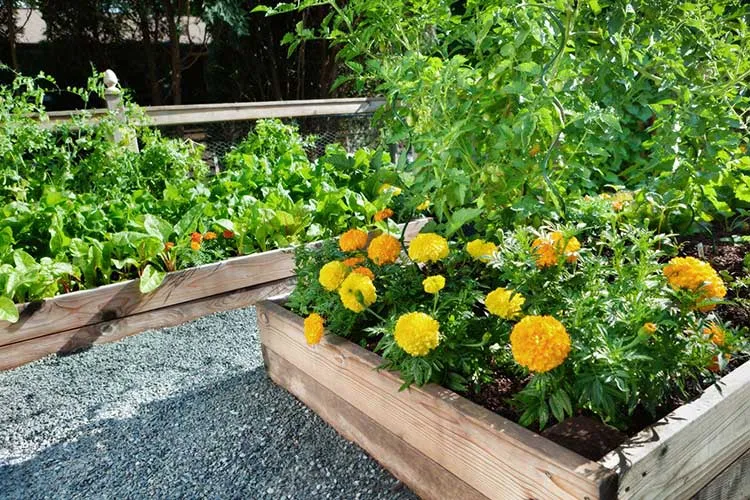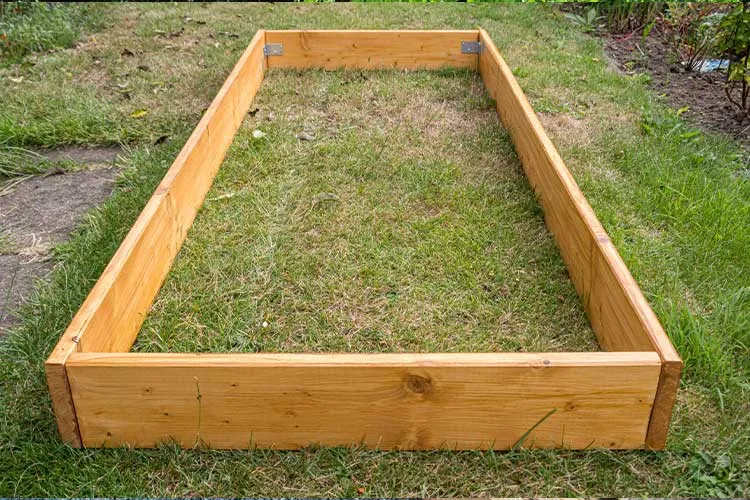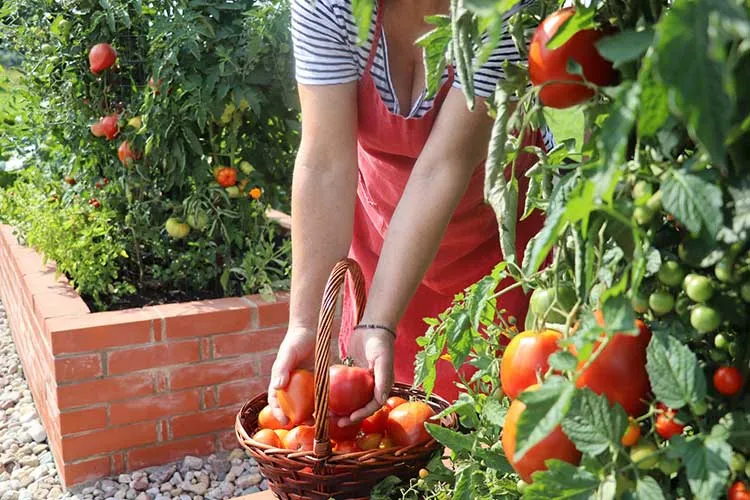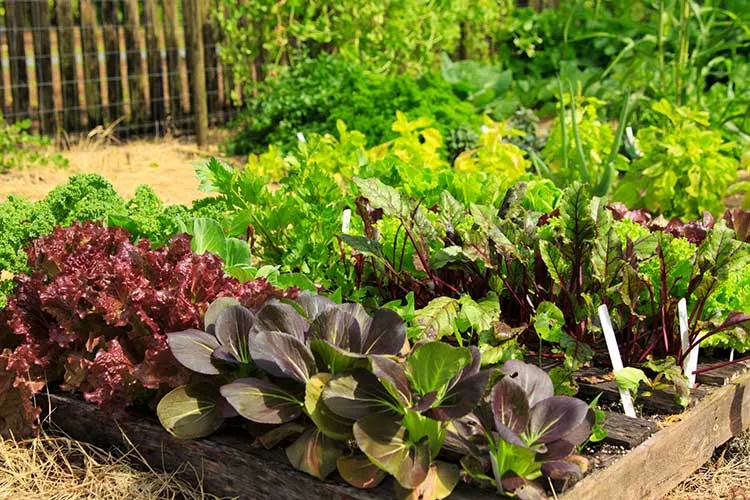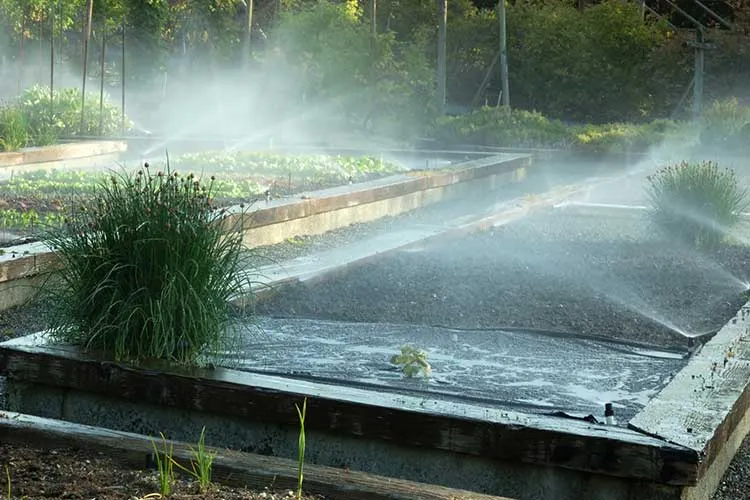When it comes to growing the best carrots in raised beds, you’re in for a treat! Raised beds offer the perfect environment for carrots to grow deep, straight, and sweet. Whether you’re a seasoned gardener or just starting, selecting the right carrot varieties for raised beds can make all the difference.
Raised garden beds give you greater control over the soil quality, which is crucial for root vegetables like carrots that need loose, well-drained soil to grow long and straight. This level of control is especially important in areas with heavy clay or compact soil, where carrots might struggle to develop properly.
So whats the best carrots to grow in a raised bed? For optimal results in raised beds, it’s important to choose carrot varieties suited to the soil depth and drainage. Shorter types like ‘Thumbelina’ or ‘Parisian’ are ideal for shallow beds, while longer varieties such as ‘Nantes’ or ‘Danvers’ thrive in deeper, well-drained soil.
In this guide, we’ll walk you through the top picks, from the reliable Nantes to the unique Parisian.
When to Plant Carrots in Raised Beds
Timing is key when it comes to planting carrots in raised beds. Carrots prefer cool weather, so the best time to plant them is either in the early spring or late summer, depending on your climate. In most regions, you can sow carrot seeds about two to three weeks before the last expected frost in the spring, when soil temperatures are around 40°F (4°C). Carrots can also be planted for a fall harvest, with seeds sown about 10 weeks before the first expected frost in the fall. This dual-season planting allows for continuous production, especially if you stagger planting times every two to three weeks for successive harvests.
In hot climates, it’s best to avoid planting in the height of summer, as soil temperatures above 80°F (27°C) can hinder seed germination and affect the quality of the carrots, often leading to poor root development or bitterness. Raised beds can help regulate soil temperature, especially when combined with mulching, to keep the soil cool and moist. This extends your growing window and promotes healthier crops.
For gardeners looking to maximize their carrot harvests, a staggered planting schedule works wonders. Planting seeds every few weeks ensures that you have fresh carrots throughout the season, avoiding a single, overwhelming harvest and letting you enjoy carrots at their peak freshness.
Table of Contents
ToggleHow to Grow Carrots in a Raised Bed
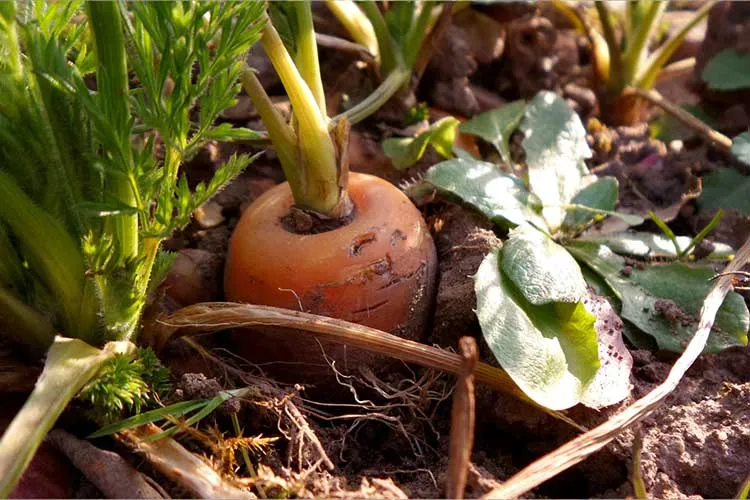
Growing carrots in raised beds can significantly improve your chances of success, thanks to the loose, well-drained soil that carrots love. Start by selecting a raised bed with at least 12 inches of soil depth to allow room for the carrot roots to grow freely. Taller beds can accommodate even the longer varieties like Imperator and Danvers, ensuring they don’t encounter the compacted soil issues common in traditional ground gardens.
Step-by-Step Guide to Growing Carrots in Raised Beds:
- Prepare the Soil: Carrots thrive in sandy or loamy soil that is rich in organic matter. Mix in compost to ensure the soil is fertile but avoid nitrogen-heavy fertilizers, which can lead to excessive foliage at the expense of root development. Raised beds offer excellent control over soil quality, helping you maintain a consistent, loose texture.
- Planting the Seeds: Sow carrot seeds directly into the raised bed, as carrots do not transplant well due to their long taproots. Space the seeds about 1 inch apart in rows that are at least 12 to 18 inches apart. Cover them lightly with soil, about ¼ inch deep, and water gently to keep the soil moist.
- Watering and Mulching: Keep the soil consistently moist until the seeds germinate, which can take up to three weeks. Carrots need even moisture throughout their growing season, so consider adding a layer of mulch, such as straw or grass clippings, to retain moisture and prevent the soil from drying out too quickly.
- Thinning: Once the seedlings are about an inch tall, thin them to 2-3 inches apart. This ensures that each carrot has enough space to develop fully without competition.
- Continuous Care: Raised beds make weeding easier, but it’s still essential to keep the area free of weeds that can stunt carrot growth. Water regularly, but avoid overwatering, as soggy soil can lead to root deformities like forking.
Do Carrots Like Sun or Shade?
Carrots thrive best in full sun, needing at least six to eight hours of direct sunlight per day. Full sunlight encourages healthy root development and boosts the growth of sweet, flavorful carrots. However, if your raised bed is positioned in a spot that receives partial shade, don’t worry—carrots can tolerate some shade, especially during the hottest parts of the day. This is particularly beneficial in warmer climates, where too much sun exposure can cause the soil to overheat and affect carrot growth.
Best Soil for Growing Carrots
Carrots thrive in loose, well-drained soil that allows their roots to grow straight and deep. Ideally, sandy loam or light, fluffy soil rich in organic matter is perfect for carrot cultivation. Raised beds are especially beneficial for ensuring this optimal soil condition, as they allow you to create the ideal growing medium even in areas with heavy or compacted soil. Carrots struggle in dense, clay-based soils, which can lead to deformed, forked roots.
Adding organic matter, such as compost, improves soil structure and promotes better moisture retention while ensuring proper drainage. It’s also important to avoid nitrogen-heavy fertilizers, as they encourage excessive leaf growth at the expense of the root. Instead, use a fertilizer that is higher in potassium and phosphorus, which will promote healthy root development.
Best Carrot Varieties for Raised Beds

Choosing the right carrot variety is crucial for a successful raised bed garden, especially since different varieties have distinct growth habits, root sizes, and flavor profiles. In raised beds, varieties that prefer loose, well-drained soil will thrive, making them a great option for gardeners looking for smooth, straight roots.
- Nantes: This cylindrical, sweet carrot is perfect for raised beds due to its medium length (6-7 inches) and minimal tapering. Nantes carrots are known for their crisp texture and are relatively easy to grow, making them a favorite for both beginners and experienced gardeners.
- Chantenay: Chantenay carrots are short and stout, making them an ideal choice for raised beds, especially if your soil is on the heavier side. Their roots are typically 5-6 inches long, and they are excellent for less-than-perfect soil conditions. Chantenay varieties are also known for their strong, earthy flavor.
- Danvers: Known for their deep orange color and tapered shape, Danvers carrots are a great all-purpose variety. They grow well in raised beds with loose, rich soil, but they are also adaptable to heavier soils if the bed isn’t perfectly prepared. Danvers carrots are typically around 6-8 inches long and offer a robust, sweet flavor.
- Imperator: These are the long, classic carrots you often find in grocery stores, growing up to 10 inches long in ideal conditions. Raised beds allow you to create deep, loose soil that these carrots need to grow their full length without becoming stunted or forked.
- Parisian: For something a little different, Parisian carrots are small and round, about the size of a golf ball. They are perfect for shallow raised beds or for gardeners who prefer smaller carrots with a sweet, tender flavor. This heirloom variety is also a great option if your raised bed soil is rocky or heavy.
When and How to Harvest Carrots
Knowing when to harvest carrots is crucial to ensuring they are at their peak flavor and texture. Carrots are generally ready to be harvested about 60 to 80 days after planting, depending on the variety. You’ll want to start checking for readiness once the shoulders (top of the carrot root) reach about ½ inch in diameter. In raised beds, it’s easier to check without disturbing the surrounding soil too much.
To harvest, gently loosen the soil around the carrots with a garden fork or trowel. Be careful not to damage the roots as you dig them up. In raised beds, the loose soil makes this process smoother, as you can lift the carrots more easily than in compacted ground. For longer varieties like Imperator or Danvers, ensure the bed is deep enough so you don’t accidentally snap the carrots as you pull them up.
Carrots taste best when harvested young and tender, but larger, mature roots can also be delicious, especially for varieties bred for winter storage. After pulling the carrots, brush off excess soil, and trim the greens to about an inch to prevent moisture loss, which can cause the roots to shrivel.
Best Raised Bed Height for Growing Carrots
The height of your raised bed plays an important role in the success of growing carrots, particularly if you’re planting long-rooted varieties like Imperator or Danvers. For standard carrot varieties, a bed with at least 12 inches of soil depth is ideal to accommodate their long taproots. However, if you plan to grow shorter or rounder varieties like Chantenay or Parisian, you can get away with a shallower bed of around 8-10 inches.
Taller raised beds—16 to 24 inches—are not only more comfortable to work with (as they reduce bending and strain), but they also help with drainage, preventing waterlogged soil that can cause root rot or deformities in carrots. Deeper beds also allow for more robust root growth, which is especially beneficial if your native soil is heavy or compact.
If space is limited or you prefer growing in smaller, urban environments, even a 6-inch raised bed will work well for baby or round carrot varieties. Adjust the bed height based on the specific carrot type and the ease of access for maintenance
Start Growing Your Best Carrots
Growing carrots in raised beds offers numerous benefits, from better soil control to easier maintenance and healthier, more uniform roots. By choosing the right carrot varieties, ensuring proper soil conditions, and planting at the right time, you can enjoy a bountiful harvest of delicious, homegrown carrots. Whether you’re growing classic varieties like Nantes and Danvers or experimenting with more unusual types like Parisian or rainbow carrots, raised beds give you the advantage of ideal growing conditions, especially in challenging soil environments. Now is the perfect time to start planning your carrot garden, so grab your seeds and get ready to grow your best carrots yet!


